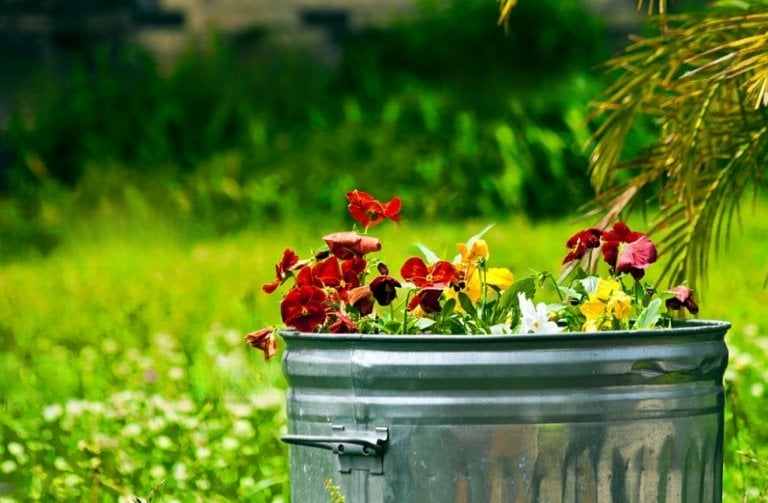When To Harvest Honeynut Squash: A Guide to Growing Honeynut Winter Squash
Did you stumble upon a small, vividly orange winter squash in your neighborhood supermarket or local farmer’s market? If so, you’ve likely encountered the Honeynut squash, a superior type within the butternut squash family, recognized for its strong sweetness and pronounced nutty taste. If you’re cultivating one in your garden, you might be curious about the ideal time to pick honeynut squash to ensure the best flavor.
Bursting with vitamins A and C, this compact power nugget isn’t just nutritiously dense; it offers an exceptionally pleasing palate too! Cultivating your own Honeynut squash introduces a fresh ingredient into your culinary arts, perfect for cozy fall soups or heartwarming pies. What’s more, its compact size makes it an efficient choice for your garden space.
So get ready to dust off your gardening gloves, as this guide takes you through the journey of growing Honeynut squash from seeding to the exciting moment of harvest. Ready to unlock some homegrown happiness?
Key Takeaways
- Honeynut squash is a smaller variety of winter squash celebrated for its sweet, nutty flavor.
- It differs from its peers, the Butternut squash an Spaghetti Squash, in size, taste intensity, and a richer orange flesh color.
- Cultivating Honeynut squash involves proper soil preparation and planting seeds with adequate spacing, typically three to four plants per mound.
- Essential care involves proper watering, weeding, fertilizing, pruning, providing pollinator-friendly environments, and protecting from pests and diseases.
- Honeynut squash is ripe for the picking when the plant appears to be near its end or first frost is due. Harvest by snipping the stem an inch away from the fruit.
- Once harvested, it’s important to cure the squash in suitable conditions before storage. Storage lengths can vary depending on specific winter squash varieties.
Decoding The Honeynut Squash

The Honeynut squash, a smaller form of winter squash, is celebrated for its sweet, nutty taste, significantly more intense than the taste of the larger Butternut squash. What it lacks in size, it more than makes up for in its nutritional value!
Born out of an experiment at Cornell University, the objective was to create something unique—a Butternut squash that was smaller, sweeter and boasted a brighter orange flesh. The breeder at Cornell was successful in this endeavor, leading to the creation of the Honeynut variety.
One of the distinguishing features of this squash is its compact vines—unlike many squashes that grow on larger, sprawling vines. So if you’re keen on maximizing space, Honeynut could be your go-to choice. However, it does demand its share of care, primarily involving ample water supply and nutrition.
As the fruit ripens, it begins to sport a darker skin tone than its Butternut counterpart. However, it’s worth noting that the Honeynut squash, despite its thin skin, does not have an extended storage life after plucking.
Let’s watch the related video here:
Planting Honeynut Squash

Successful Honeynut squash growth is rooted in soil preparation and timely plantation. Begin by clearing the area of weeds or debris, and loosen the soil using a garden fork or tiller. Introduce compost or well-rotted manure to boost the soil’s fertility and drainage.
Plant your honeynut squash seeds when all threats of frost have passed, and the soil temperature consistently measures around 60°F (15°C)—this typically translates to late spring or early summer.
Choose a spot blessed with at least 6 hours of full sun each day for optimal growth. As you plant your seeds, create 12 inches high mounds that are 2 feet in diameter. Be sure to space these mounds at least 3 feet apart to accommodate vine spread, which is a good rule of thumb for per hill planting.
Plant three to four seeds per hill, about an inch deep into the soil. Once the seeds have found their spots, water them generously but gently to avoid displacement.
You can watch the related video here:
The Equipment Needed
Planting your Honeynut squash involves a set of essential tools:
- Squash Seeds: Choose premium seeds resistant to powdery mildew.
- Fertilizer or Compost: Nutrition for the soil, fostering strong plants.
- Spade: Essential for digging holes to sow the seeds.
- Gardening Gloves: Protection for your hands from dirt and sharp objects.
- Watering Can or Hose: To water the plants regularly but moderately.
- Pruning Shears: Helps manage plant size and promotes better yield.
- Sharp Knife: Useful for harvesting ripe squash from the vine.
Sowing Instructions
Plant your Honeynut squash seeds when the weather warms up and frost is a worry of the past. Each seed should be planted about 1 inch deep, maintaining a distance of at least 3 feet between each row. The best practice is to sow two seeds per hole.
Keep your soil moist, waiting for the seeds to sprout within 1 to 2 weeks. Warm soil accelerates the growth process.
Caring for Honeynut Squash Plants
Honeynut squash plant care is a multi-step process, each contributing to the plant’s overall health and productivity during the growing season.
- Watering: Squash are thirsty plants. Provide ample water, especially in dry periods, per plant.
- Weeding: Keep your garden weed-free. Weeds and squash plants compete for resources like water and nutrients.
- Fertilization: Regular, balanced fertilizer or compost feed encourages robust growth and fruitful harvests.
- Pest Control: Regularly monitor for pests like squash bugs and squash vine borers. Implement natural, organic methods for pest management.
- Disease Prevention: Watch out for symptoms of diseases, like powdery mildew on leaves. Treat them readily to prevent spread.
- Pruning: Ensure good air circulation by pruning leaves lightly, reducing disease risks.
- Pollination Support: Plant neighboring flowers to attract pollinators—critical for fruit setting in squash flowers.
- Frost Protection: As winter nears, consider protecting your plants from frost using old sheets or covers. Frost can threaten the curing and storage process, especially important for honeynut winter squash which has a long shelf life.
Harvesting Honeynut Squash: Identifying The Right Time
After caring for the plants, timing your harvest correctly is the final step towards enjoying your homegrown Honeynut squash.
Honeynut winter squash matures into fruit roughly 60 days following the pollination of its flower. In Zone 5, the ideal harvest time is no earlier than mid-September. The telltale sign of a ripe squash ready to harvest is when the plant appears to be approaching its end or frost is incoming.
Harvesting at the correct time guarantees that the fruit doesn’t just have an excellent taste but also provides a healthy storage life.
Please watch the related video below:
How and When to Harvest Honeynut Squash
Here’s a step-by-step method to harvest your Honeynut squash:
- Wait until plants are near their end and/or frost is expected.
- Snip each squash’s stem about 1 inch from the fruit.
- If you cannot harvest before the first frost, protect the fruits using old sheets or floating row covers.
- Post-harvest, cure the squash in a warm, well-ventilated space for at least a week for improved flavor and longer storage.
- During storage, rotate the squash every few weeks for even ripening and promptly consume any fruit developing soft spots.
- Remember, curing Honeynut squash is a process that can take a few weeks, so patience is crucial.
Storing Honeynut Squash
If you’re wondering about the key considerations and steps to storing Honeynut squash, here’s what you need to know:
- Winter squash, including Honeynut squash, requires curing in a warm spot with good airflow for at least a week.
- The ideal temperature for curing winter squash is around 80°F (27°C).
- As frost can affect the fruit’s rind and hamper the curing process, it’s vital to take protective measures against frost if you haven’t harvested before the first frost date.
- When harvesting, cut the squash from the vine about 1 inch from the fruit to prevent damage, leading to spoilage during storage.
- Once cured, store Honeynut squash in a cool, dry place with good ventilation. Rotate the fruit every few weeks for even ripening and avoid any developing soft spots.
- Remember, not all squash varieties offer similar storage lengths. While Delicata squash stores well for just a few months, larger Maxima variants can indeed be stored till the following summer.
Conclusion
Harvesting Honeynut squash at the right time is pivotal for optimum flavor and good storage. Look for dry stems, dark tan, or burnished orange skin indicating ripeness.
Remember, when it’s time to harvest, use clippers to avoid damaging these delicate fruits. Cultivating your own Honeynut squash not only adds a fantastic ingredient to your kitchen but also is tremendously rewarding. It ensures you enjoy nutritious meals throughout the winter. So, why wait? Try growing Honeynut squash in your garden this season. Happy gardening!
Frequently Asked Questions
What is a Honeynut squash?
A Honeynut squash, also known as ‘Honeynut’ winter squash, is a smaller type of butternut squash. It grows on a compact vine and is characterized by its sweet and nutty orange flesh.
How do I plant my Honeynut squash seeds?
Carefully choose a spot that gets at least 6 hours of full sunlight each day. Create a hole 1 inch deep in the soil and drop in 4 seeds per hole, with the plants spaced at least 6 feet apart.
How do I care for my Honeynut Squash plants?
Provide your plants with water every 2 to 3 days, and use compost or fertilizers for nutrition. Be wary of pests and diseases, acting immediately should you encounter any.
Do all flowers on my Honeynut squash plant produce fruit?
Only female flowers bear fruit, while male flowers help pollinate female flowers.
When is it time to harvest my Honeynuts?
The skin color at the base of the plant turning orange-yellow indicates a ripe squash ready for harvest.
What does Honeynut Squash taste like?
Honeynut Squash is celebrated for its intensely sweet flavor, with taste notes reminding one of both butternut and buttercup squashes. Its creamy texture makes it an excellent addition to pies and soups.







